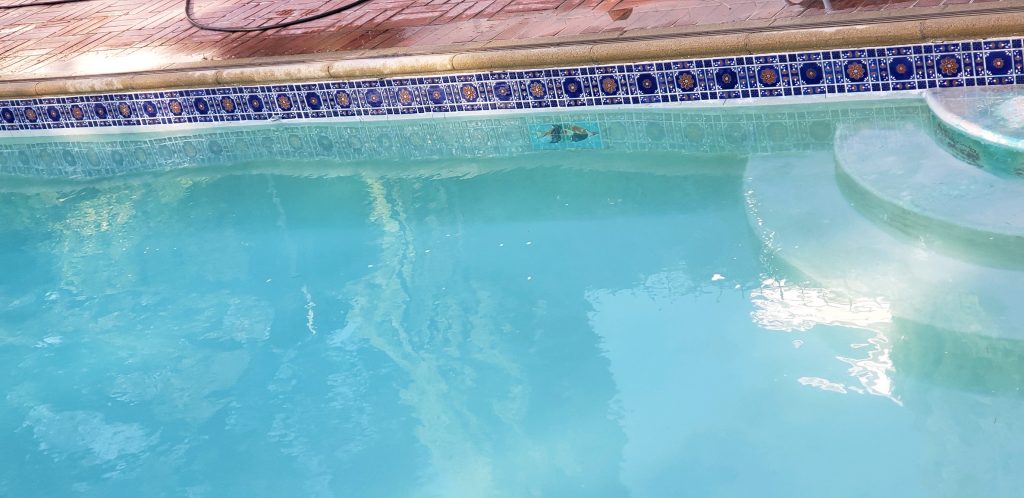Did you know there are two types of calcium deposits on pool tiles?
Yes, even if the unpleasant by-product looks the same — the whitish deposit on the pool walls — they’re not made of the same component.
Why do you need to know this?
Because understanding the composition of the whitish deposits on your pools tiles is the first step to removing them and keeping your pool tiles looking good as new.
Let’s dive in!
Types of Calcium Deposits on Pool
There are 2 common types of calcium deposits on pool: calcium carbonate and calcium silicate. It is important to understand which type harms the walls of your pool.
The calcium carbonate is white, scaly and easily detached. Calcium silicate is slightly gray and more solid, which makes it more difficult to remove.
If the walls of your pool contain calcium silicate, the scale on the walls of your pool is a symptom of a more serious problem: calcium scale in the plumbing and filtration system. This is a problem that only a professional pool maintenance company can deal with.
If you don’t know what type you have on your pool, use a dropper to pour muriatic acid on the deposits. Calcium carbonate will foam in reaction to acids. Calcium silicate, being a more solid substance with robust construction, will remain unchanged.
Removing Calcium Carbonate
If your pool contains calcium carbonate, removing it is easy, but takes time.
You can use a rough but harmless object for tiles such as a wet pumice stone or an eraser to flake off deposits.
You can also get calcium descaling treatment solutions from a pool service company or a pool supply store. Follow the product instructions to avoid damaging the pool water or injuring yourself.
Removal of Calcium Silicate
Calcium silicate is incredibly difficult to remove on your own. You can try using a pumice stone, but it will take a ton of elbow grease and time to complete the process successfully.
If you have a vinyl or fiberglass pool, this will not work at all. Even some descaling treatments can take months to break down the lasting calcium silicate.
You will probably need to hire pool maintenance professionals to remove lime build-up if you cannot do it yourself. They can also adjust the quality of your pool water, including pH and calcium levels, to prevent future buildup.
Remove limestone with a blowtorch and a polishing machine
If you have emptied your pool to clean it and you notice traces of lime, there are two methods that can get rid of this debris. These methods are effective but can take a long time depending on the size of your pool.
To remove the lime that is in the walls of your pool, just use a blowtorch to make the tartar less robust and then rub it with a wire brush. With the effect of heat, the tartar will be easily removed.
If you have limestone at the bottom of the pool, simply clean the pool thoroughly with a vacuum cleaner, then sand it with a sanding and polishing machine.
Once descaling and polishing are finished, rinse your pool with a karcher to remove debris. Then evacuate your pool, let it dry, and fill it again if you want to reuse it.
If you do not want to fill it immediately, choose a tarpaulin or a protective cover. Your pool will therefore remain intact and ready to be filled at any time you wish.
